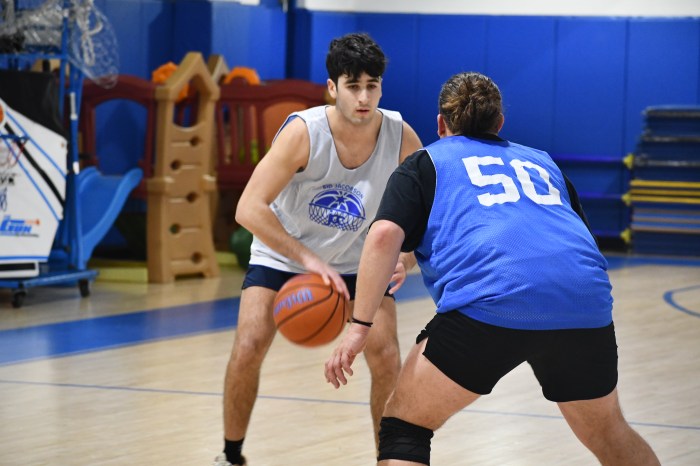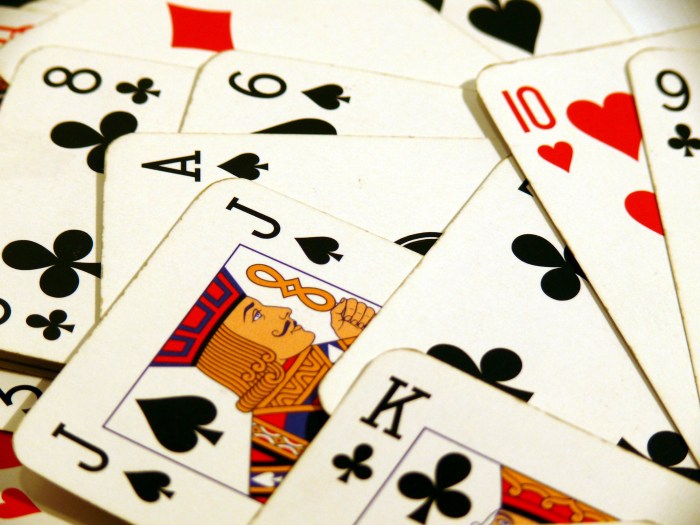
Many years ago, Robert Cleva, who runs a commercial real estate business in Woodbury, fell off his bike, landed on the grass and hit his head. An avid exercise enthusiast, he got back on his bike the next day and wore a baseball batting helmet. Dissatisfied with other bike helmets and unhappy with his fallback version, he came up with his own design, eventually patenting a product for bikers, skiers and skateboarders—even police officers.
“People who don’t want to look like they’re wearing a helmet but want to have protection are our clients,” says Cleva, whose online head gear company is called Crasche New York. Last year they began marketing the Crasche Hat, which looks like a woolen ski cap (it’s actually 100 percent Acrylic) but has hidden “impact-resistant protective inserts” made out of polycarbonate plastic and padded with neoprene rubber and air chambers to cushion the shock.
Cleva noticed that parents were buying the Crasche Hat for their daughters playing lacrosse—especially if the girls had suffered concussions—and that surprised him. He had it tested to determine its effectiveness against the impacts of lacrosse sticks and balls to the player’s head.
“It turned out to be a very good product for stick to head but it was marginal for ball to head,” Cleva says.
In February 2012 he’d submitted the hat model to US Lacrosse (USL), the sport’s national governing body, based in Baltimore, where the first women’s lacrosse team played in the United States in 1926. The league itself has been debating how to address the concussion issue—a debate that Cleva inadvertently got caught up in. At first, he got an encouraging reply from Melissa Coyne, the women’s game director at USL.
“Your product complies with current USL rules for women’s lacrosse,” Coyne emailed Cleva in March 2012. “Hope that helps!”
But with the test results in hand, Cleva decided to redesign his product so it could withstand a ball speeding to the head at 78 mph and reduce the impact below the concussive level.
“We re-engineered it, and informed US Lacrosse that we’d made some changes,” Cleva says. “We opened it up—took the top off—because the girls didn’t want the skull cap, they wanted their hair [coming] out the top.”
He named the new model the Crasche Middie, after a lacrosse position. It resembled a head band, available in red, white, black, navy blue or light blue.
“It’s designed to rest on the head,” Cleva explains. “It’s attached to the goggles. When you pull the goggles down, it goes back with it.”
He’s most proud of the material used in the new headgear’s inserts. “You could hit the thing with a sledge hammer and you can’t crack it,” he says.
At this year’s January national lacrosse convention in Philadelphia, Cleva set up a booth featuring the Crashe Middies underneath a big banner proclaiming, “The future of headgear in girls lacrosse.” The future was short-lived, however. USL officials shut him down and escorted him out of the building. Cleva thought USL’s previous approval of the Crasche Hat extended to the Crasche Middie. He was mistaken, they informed him. He would have to submit his new design for approval.
“It happened to be seen by one of our rules committee members who brought up the fact that this product was different from the one that we had approved and this had not been approved,” Coyne tells the Press. “It’s significantly different!” She added that the Crasche Middie brochure “made some pretty incredible claims of its protective value, and that concerned some members of our organization, specifically our sports, science and safety committee…”
After Cleva submitted his new headgear for their examination, the USL’s rules subcommittee determined that the product was “deemed illegal for play.” In their email to him, they said it violated “portions of Rule 2” regarding “Soft Head Gear…defined as any head covering without hard or unyielding parts that have the potential to injure another player. The product, Crasche Middie, contains hard inserts that are not unyielding which could possibly pose a danger to other players. Additionally, those inserts which [sic] are not adequately padded or appropriately secured and can be easily dislodged. They could potentially injure the player wearing the product or another player.”
Cleva was infuriated by USL’s response and wrote Coyne the following: “To claim that the inserts can come loose is patently false. To claim that they become a danger to other players is ridiculous.”
He sent them an impact test from ICS Laboratories in Ohio, which he’d paid for, claiming it showed that not only did his headgear pose no threat to another player it actually reduced the force of two players knocking heads if one wore the Crasche Middie and the other girl didn’t. USL’s Coyne was not persuaded.
“Parents are looking for protective headgear. We understand that,” says Coyne. “But we as a governing body also have a responsibility to make sure that consumers are protected.”
Coyne told Cleva that US Lacrosse is working closely with ASTM International, a nonprofit organization based in Pennsylvania formerly known as the American Society for Testing and Materials, to create a women’s lacrosse headgear standard. She suggested his company become a member. Cleva says joining would cost only $75, but he’s concerned that the terms of the membership could impinge on his patent rights. He is having his lawyer look into that issue before he signs up. Without a doubt, he insists, “My product will be the standard because it’s so effective.”
Of more immediate concern, he says, is that one of ASTM’s current members told him that setting standards could take two years at least. Any delay is hard for Cleva to take.
“How many girls who are denied the use of the Crasche Middie will subsequently suffer a preventable head injury?” Cleva wrote Coyne back in February after she suggested he wait until USL’s committee meeting in June.
The answer is that nobody knows.
A researcher at George Mason University, Shane Caswell, partnered with two members of USL’s sports science and safety committee to examine head injury incidents reported during 2008 and 2009 involving high school girls’ lacrosse players between the ages of 14 and 18 years old. Their study came out in February 2012. Gathering data from 529 varsity and junior varsity games, they found 21 concussions. Most of these injuries resulted from stick-to-head contact in front of the goal.
Coyne says that USL is constantly monitoring national research on the occurrence of concussions in the sport. “I don’t necessarily see that we’ve had this huge jump in the actual injury,” she says. “I think the actual diagnosis has been what’s changed.”
The girls’ game is intended to be safer than the boys’ game, says Stephanie Degennaro, who manages the Lacrosse Unlimited store in Miller Place. She played varsity lacrosse at Longwood High School in Brookhaven and at Stony Brook University. When she’s not selling merchandise for “the fastest sport on two feet,” she’s coaching and refereeing girls’ games.
“Basically women’s lacrosse is supposed to be a non-contact sport,” she says. “Everything is supposed to be finesse and controlled… Men’s lacrosse is a contact sport like football.”
Degennaro’s store does not carry headgear for girls, but she has noticed players wearing “these headband things” and “those soft foam ‘ugly’ helmets” on the field.
“Approving headgear is going to make the girls’ game more violent,” she says. “To be completely honest, I wouldn’t want to see the game go that way. Some of the girls out there wearing these helmets act as if they’re invincible. I would only want to give [headgear] to girls who’ve had prior concussions.”
One of those girls playing lacrosse with a concussion is Cindy Dreher’s 10-year-old daughter, Darby, who picked up the sport after watching her two older brothers play. The Babylon Village mother bought her a Crasche Middie because she had gotten a concussion from a serious horse-back riding accident last year.
“My daughter has dark hair so you don’t even notice she’s wearing it out there,” Dreher tells the Press. “It looks like a band for sweat. It doesn’t look like a helmet at all.”
Dreher had looked for a long time before she found Cleva’s product online.
“I had to do some research because what’s available for girls right now is this ridiculously stupid, soft helmet that doesn’t protect at all,” Dreher says. “They say it’s a ‘non-aggressive game’ but I don’t care because it’s got a stick and a ball, and those girls are very capable of hitting each other pretty hard with it…”
Lacrosse Unlimited’s Hauppauge store manager, Jason Sweet, a high school and college lax (lacrosse) player who still plays, thinks that giving girls’ more protection will change their game. “They might as well get gloves, too, and go out there and beat each other up like we do!” laughs Sweet, who’s had three concussions himself, but none since he started wearing a $234 helmet. By comparison, the Crasche Middie retails for under $30.
“I would say that most parents want headgear [for girls],” Sweet says, “Most players don’t.”
Cleva thinks one obstacle facing his product’s approval is growing tension within girls’ lacrosse about the future of the game.
“You have one camp that says, ‘Let’s put helmets on and protect the girls, and become like a boys’ sport. If it’s rough and tumble, who cares?’” Cleva explains. “The other side is saying: ‘That’s the worst thing. We don’t want the game to change. Leave it alone.’ US Lacrosse is in the ‘leave-it-alone’ camp. This is a big controversy, and I’ve kind of fallen into the middle of it.”
As of now only goalies in girls lacrosse are permitted to wear hard helmets. Goggles were mandated for all female players in 2004—New York State reportedly led this initiative—but now USL is considering whether the eyewear standards should be revised. “We’re taking a good look at that,” Coyne says.
Last week, Cleva got his hopes up when a USL official asked him to send his headgear to the rules committee at the National Collegiate Athletic Association. Then he learned that the USL’s own subcommittee, scheduled to convene this month, had tabled discussion of his headgear until June “when they can get the entire rules committee together,” Cleva says.
“Mr. Cleva has been told on several occasions that if he adjusts his product to fit the two elements that we wanted fixed – if he makes those adjustments—we are happy to look at his product again,” says Coyne. “But he has to address them just like anyone else. He’s not the first person to be rejected.”
Cleva has demonstrated the headgear’s ability to hang onto its inserts to Rep. Tim Bishop (D-Southampton) and to an aide in the office of Rep. Peter King (R-Seaford). He doesn’t believe USL is giving his product a fair shake.
“They’re saying it can come out and it can’t come out!” Cleva exclaims. Given the opportunity, this reporter shook the Middie as hard as possible for almost a minute and finally an insert dislodged when the head gear was hurled against the floor.
“When a 10-year-old comes to your office and her mother is terrified that the girl’s going to get hurt, it’s the human element that’s overpowering,” Cleva says. “We think we offer a very reasonable product that is going to offer impact protection and give some peace of mind to people and these people won’t let your daughter buy it.”






























